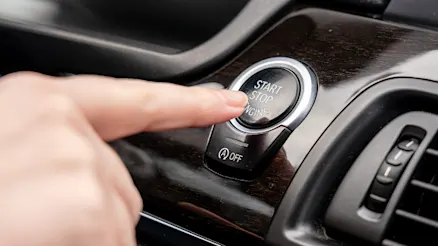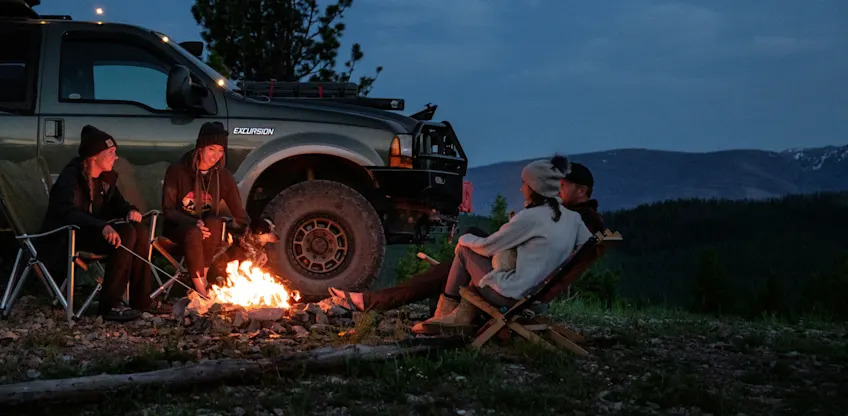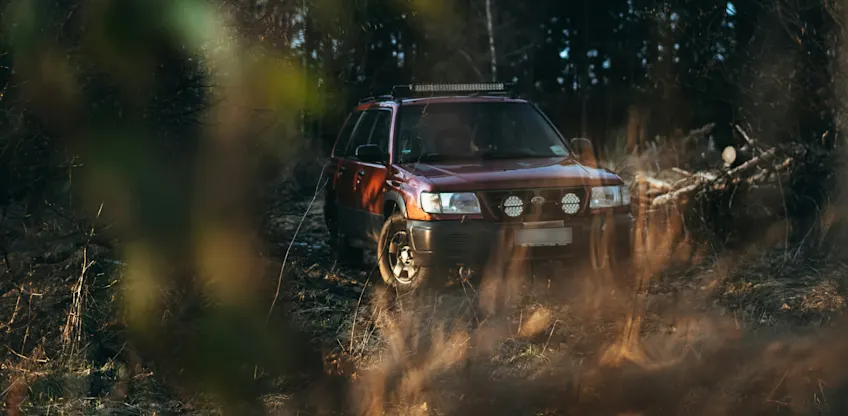
Why does my car behave differently when I start it in the morning?
Ever notice your car feels different in the morning? Learn why cold starts affect performance and how to keep your car running smoothly year-round.

Keen to go bush? Well you’ve come to the right place. Venturing off the beaten path requires careful pre-planning, and it’s best to consider all the factors before you leave civilization behind you. So whether it’s vehicle choice, gear preparation, trail navigation or responsible practices, let’s dive into everything off-roading: bush edition.
Totally new to off-roading? No problem. Check out our comprehensive guide to four-wheel driving.
Choosing the right vehicle is paramount for a successful bush expedition due to the rugged and challenging terrains you’ll likely encounter whilst off the beaten track. 4WDs, like the Toyota Landcruiser 70 Series and Toyota Landcruiser Prado, are renowned for their ability to excel in off-road environments, and are usually your best bet if you’re serious about tackling some remote trails. If, on the other hand, you’re merely looking to make it to your campground in one piece, an AWD like a Subaru Outback or Volkswagen Tiguan should do the trick given their additional clearance and traction control when compared with that of a traditional 2WD. Just make sure you’re not over-committing yourself by attempting to take on a gnarly 4WD only track equipped solely with the attitude ‘she’ll be right’, because she very well may not be (and you won’t know until it’s too late).
There are endless modifications you can make to get the most out of your vehicle and enhance its off-road capabilities. For starters, lift kits provide additional ground clearance, all-terrain or mud tyres improve traction and bash (or skid) plates provide increased undercarriage protection. When it comes to upgrading your 4WD, we recommend choosing modifications that improve the overall functionality and usefulness of your vehicle first. Popular additions include light bars, roof racks and UHF radios which make camping and off-road trips that much easier. For those who spend a lot of time country driving, adding a bull bar is a great way to protect your vehicle in the event of an animal strike. Not only that, a bull bar also provides additional recovery points that, when paired with a winch, make vehicle recovery a breeze (most of the time).
Looking for vehicle inspiration? Consider our top 4x4s for off-roading.

Equipping yourself with the right gear is essential for ensuring a safe and enjoyable off-roading adventure. At a minimum, you should consider packing:
Remember to customise your packing list based on the specific conditions of the area you plan on exploring and the duration of your trip. Always prioritise preparedness for a hassle-free and enjoyable getaway.
When it comes to exploring remote areas, research is paramount. Online resources and local off-roading communities can provide valuable insights, ensuring you select the trail that suits your skill level and preferences. From the expansive Blue Mountains to the rugged outback, NSW offers a plethora of unique trails just waiting to be driven. Some of our favourite tracks can be found in:
Just make sure you come prepared for the challenges of remote travel and ensure your vehicle is properly equipped with recovery gear, navigation tools and emergency supplies (not to mention a spare tyre or two). Additionally, always remember to check weather conditions and trail closures before setting off to avoid disappointment. It’s also a good idea to inform someone (who’s not travelling with you) of your itinerary and expected return date - just in case.
Planning a 4WD trip to the coast? Check out our off-roading guide: beach edition!

Just like driving on the beach, four wheel driving in the bush requires a certain finesse. Due to the often dense vegetation and rugged terrain, it’s important to approach bush trails with caution, particularly if it's your first time in the area. Skills such as hill climbing, rock crawling and water crossings can take on new dimensions depending on the landscape and it’s always important to give the road ahead your full attention.
When driving on non-paved roads, watch out for sharp stones or exposed tree roots as these can easily burst a tyre if given the chance. Corrugated gravel roads present additional challenges, primarily because of the vibrations they cause, and will require you to find the ‘sweet spot’ on your speedo that allows you to coast over those annoying washboard grooves. Of course, another challenge you’ll have to face once you’ve gone bush is the copious amounts of wildlife around every corner. Be extra vigilant around dusk and dawn as this is when nocturnal wildlife will pose the biggest risk to you and your vehicle. Stay alert and remember never to swerve, your life is more important.
Depending on the weather, and your location, you may encounter some mud holes along your route whilst off-roading (we’re looking at you Tasmania). These can vary tremendously from easily crossable to nightmare bog status and will usually require a thorough assessment prior to crossing. If you have access to a stick or branch, it’s advisable to test the depth of the water whilst also gauging whether or not the bottom is solid or soft. If it’s looking like it’s going to be a tough one, get your winch ready and have your people standing by to jump into action to pull you out ASAP should you get stuck - the inside of your vehicle will thank you later.
As always, safety cannot be overlooked. Reliable communication devices are a must, with two-way radios and satellite phones being a good way to stay in contact with fellow off-roaders. If you’re new to four-wheel driving, consider adopting the buddy system or travel in a convoy to ensure no one is left behind (or worse). Typically, convoy procedure dictates maintaining contact with the vehicle directly behind you, either visually or via radio, with the leading driver not diverting from their current track until the following vehicle has seen where they’ve gone. Not only is this safer, it’s also a lot more fun. It’s also important to educate yourself on vehicle recovery techniques and basic first aid skills because you never know what can go wrong when you’re in the bush.
Maintaining your vehicle is essential to ensure its reliability and performance in the long run. Conducting a pre-trip inspection is crucial; don’t overlook checking your fluid levels, tyre condition, and the integrity of the brake system as a starting point. Cleaning your vehicle post-off-roading is equally important, as mud, debris and water can take a toll on delicate components. After washing thoroughly, inspect for any signs of damage and consider applying rust prevention measures to help prolong the lifespan of your vehicle. Regular maintenance tasks, such as oil changes and filter replacements, should be performed according to the manufacturer’s recommendations to keep your vehicle in optimal condition.
There’s nothing quite like going bush, so pack up your car and get ready to hit the road. We’re sure you’ll have an epic adventure!

Ever notice your car feels different in the morning? Learn why cold starts affect performance and how to keep your car running smoothly year-round.

Regularly checking your tyre pressure is crucial to your vehicle’s safety, fuel economy and optimal driving.

Looking for the perfect gift for the car enthusiast in your life? Carma’s experts have you covered.